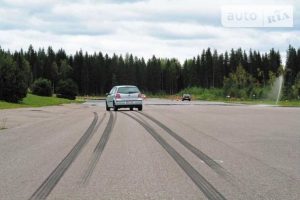When it comes to driving safety, few factors are as crucial as braking distance. Whether you’re driving a compact city car, a high-performance vehicle, or an electric SUV, understanding what influences your car’s ability to stop quickly and safely is vital. In this article, we’ll break down the concept of braking distance, explore the factors that affect it, and show you how to reduce it effectively.
What Is Braking Distance?

Braking distance is the distance a vehicle travels from the moment the brakes are fully applied to the moment the vehicle comes to a complete stop. It’s one part of the total stopping distance, which also includes reaction time.
Total Stopping Distance = Reaction Distance + Braking Distance
Let’s define both:
-
Reaction Distance: The distance your vehicle travels while you recognize the need to brake and move your foot to the pedal.
-
Braking Distance: The distance the car travels after the brakes are applied.
Average Braking Distances at Different Speeds
| Speed (km/h) | Braking Distance (dry road) | Braking Distance (wet road) |
|---|---|---|
| 30 | 6 m | 9 m |
| 50 | 13 m | 19 m |
| 90 | 40 m | 60 m |
| 120 | 73 m | 109 m |
Note: These distances are approximate and assume a well-maintained brake system and average tires.
Key Factors That Influence Braking Distance
Several variables can significantly affect how quickly your car stops. Here’s a breakdown:
1. Vehicle Speed
Speed is the most influential factor. The faster you drive, the exponentially longer it takes to stop.
-
Doubling your speed quadruples your braking distance.
-
At 60 km/h, you might stop in 20 meters.
-
At 120 km/h, it could take 80 meters or more.
2. Condition of the Braking System
Worn brake pads, degraded fluid, or damaged rotors significantly reduce braking efficiency.
Brake System Checklist:
| Component | Impact When Worn | Maintenance Tip |
|---|---|---|
| Brake Pads | Reduced friction, longer stopping | Replace every 30,000–70,000 km |
| Brake Discs | Uneven braking, overheating | Inspect for warping and thickness |
| Brake Fluid | Spongy pedal, reduced pressure | Replace every 2 years |
| ABS/ESC | Loss of control on slippery roads | Ensure system lights and diagnostics work |
To maintain top performance, regularly service your braking system. You can Buy Brake System online for quality parts at affordable prices.
3. Tire Condition and Type
Your tires are the only point of contact between your car and the road.
How Tires Affect Braking:
| Tire Type/Condition | Effect on Braking |
|---|---|
| New all-season tires | Balanced performance in most conditions |
| Worn tires | Reduced grip, increased stopping distance |
| Winter tires in summer | Softer compound, longer braking |
| Performance tires | Best grip on dry roads |
Tip: Keep tires inflated to the recommended PSI and check tread depth regularly (minimum 1.6mm).
4. Road Surface
The type and condition of the road significantly impact braking.
| Surface | Braking Distance Effect |
|---|---|
| Dry asphalt | Shortest distance |
| Wet road | Increases distance by 30–50% |
| Snow or ice | Can double or triple the stopping length |
| Gravel/dirt | Reduces tire grip, increases distance |
5. Vehicle Weight and Load
A heavier vehicle needs more time and distance to stop, especially when carrying cargo or passengers.
-
Fully loaded SUV vs. empty: Braking distance may increase by 20–30%
-
Trailer or towed load: Requires even longer stopping space
6. Driver Reaction Time
While not part of braking distance, your reaction time determines total stopping distance.
| Driver Condition | Reaction Time (sec) | Effect |
|---|---|---|
| Alert and focused | ~1.0 sec | Average stopping scenario |
| Distracted (phone, etc.) | 2–3 sec | 20–60m added distance at highway speeds |
| Fatigued or impaired | 3+ sec | Extremely dangerous, slower response |
How to Reduce Your Braking Distance

Here are actionable ways to ensure your vehicle stops in the shortest possible distance:
Maintain Your Brake System
-
Check pads, rotors, and fluid regularly.
-
Don’t ignore squeaking, vibration, or warning lights.
-
Use OEM or high-performance replacement parts.
Upgrade Your Brake Components
Consider upgrading to:
-
Performance brake pads: Better friction material
-
Slotted or drilled rotors: Better heat dissipation
-
Stainless steel brake lines: Less flex, better pedal feel
Find trusted options when you Buy Brake System online.
Use Quality Tires
-
Invest in premium all-season or performance tires.
-
Switch to winter tires in cold climates.
-
Monitor tire pressure and tread depth.
Adjust Driving for Conditions
-
Reduce speed in wet or snowy weather.
-
Increase following distance.
-
Brake earlier and more gradually when traction is reduced.
Myths About Braking Distance
| Myth | Reality |
|---|---|
| Bigger brakes always stop faster | Only if matched with proper tires and brake balance |
| ABS reduces braking distance | Not always—designed for stability, not necessarily shorter stops |
| Sports cars stop better in all conditions | Only with proper tires and maintained systems |
| Brake upgrades are only for racing | Useful for daily drivers in hilly or high-speed environments |
Final Thoughts
Braking distance isn’t just a number — it’s a critical aspect of vehicle safety that changes constantly based on your speed, the condition of your vehicle, and your surroundings. Understanding the variables that affect stopping distance can make you a safer driver and help you make smarter maintenance and upgrade decisions.
By investing in quality components, driving responsibly, and staying alert, you can significantly reduce your braking distance and avoid accidents.
Need new pads, discs, or brake fluid? Buy Brake System online for top-quality parts delivered straight to your door.